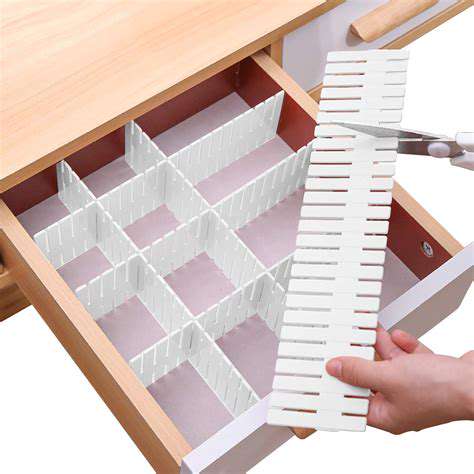How to Style a Console Table
Adding Functionality and Practicality to Your Style
Elevating the Console Table's Role
Console tables, often overlooked, are versatile pieces that can significantly enhance a space. Beyond their primary function of providing a surface for decorative objects, they can also become the focal point of a hallway, entryway, or living room. By thoughtfully incorporating them into your design, you can create a visually appealing and functional area that seamlessly blends aesthetics with practicality.
Consider the console table's placement. Is it positioned to maximize its potential as a display area? Or is it strategically placed to act as a subtle separator between different zones in your home? These choices can greatly impact the overall style and functionality of the space.
Choosing the Right Materials and Size
Selecting the right materials for your console table is crucial. From sleek glass tops to warm, rustic wood finishes, the material choice should complement the existing décor and reflect your personal style. A sturdy construction is equally important, ensuring the table can withstand daily use and display items without compromising its aesthetic appeal. The size of the console table is equally important. It should be proportionate to the room's dimensions and not overwhelm or dwarf the space.
Consider the available space before committing to a specific size. A small console table can be perfect for a narrow hallway, while a larger one can be more suitable for a spacious entryway or living room.
Incorporating Decorative Elements
A console table is a blank canvas for showcasing your personal style and taste. Strategically placed decorative items, such as vases, sculptures, and framed artwork, can transform a simple console table into a captivating focal point. Consider the color palette of your home and choose decorative elements that complement the existing hues.
Don't overcrowd the table. A few carefully selected pieces will create a more visually appealing and balanced display. Pay attention to the scale and proportion of the objects you choose to ensure a harmonious aesthetic.
Integrating Functionality with Style
A well-designed console table should seamlessly blend functionality with style. Consider incorporating storage solutions, such as drawers or shelves, to keep frequently used items organized and out of sight. This not only enhances the table's practicality but also contributes to a more polished and refined aesthetic.
Think about the specific needs of the area where you're placing the console table. If it's in the entryway, consider storage for keys, mail, or other frequently accessed items. If it's in the living room, it can serve as a surface for books, magazines, and decorative objects.
Lighting and Texture Enhancements
The right lighting can significantly impact the overall ambiance of a console table display. Use lamps, candles, or strategically placed lights to highlight key decorative pieces and create a warm and inviting atmosphere. Incorporating different textures adds depth and visual interest to the console table display.
Combining different textures, such as the smooth surface of a glass vase with the rough texture of a woven basket, creates a more dynamic and engaging visual experience. Consider the interplay of textures to add visual interest and depth to your console table display.
Accessorizing for a Personalized Touch
Accessories are the finishing touches that can personalize and elevate a console table's aesthetic. From mirrors and clocks to tapestries and rugs, the right accessories can transform a simple piece of furniture into a statement piece. Consider the overall theme of the room and choose accessories that complement the existing décor and your personal taste.
Don't be afraid to experiment with different styles and patterns to reflect your individual personality and create a unique and captivating display. The right accessories can add a personal touch to your console table and create a space that truly reflects your style.
Console Table Styling: Putting it All Together
Choosing the Right Style
A console table's style should complement the overall aesthetic of your space. Consider the room's existing décor, furniture, and color palette. A modern console table with clean lines might look fantastic in a minimalist living room, while a more ornate, traditional piece could add a touch of elegance to a formal entryway. Think about the materials used – wood, metal, glass – and how they interact with the rest of the room. Choosing a style that harmonizes with your existing design will make the console table a focal point without feeling out of place.
Consider the scale of the table in relation to the room's size. A large console table in a small entryway can overwhelm the space, while a tiny table in a grand foyer might feel lost. Measure the space where you intend to place the console table to ensure it fits proportionally and creates a balanced composition. This careful consideration will help you avoid design pitfalls and create a visually appealing and functional space.
Don't be afraid to experiment with different styles. Explore various options online, in design magazines, and in furniture stores. Take note of features like the table's shape, the material used for the top surface, and the decorative details. Allow yourself time to browse different options to find the console table that best suits your unique taste and enhances your home's personality.
Adding the Finishing Touches
Once you've selected your console table, the finishing touches are key to bringing the piece to life. Decorative elements like artwork, vases, and sculptures can add personality and visual interest. Choose pieces that complement the table's style and color scheme, creating a cohesive and stylish look. Consider using a variety of textures and heights to add visual depth and interest. For example, a sleek, modern vase paired with a textured woven rug can create a captivating contrast.
Lighting plays a significant role in highlighting the console table and the surrounding area. A strategically placed lamp or a collection of smaller decorative lights can draw attention to the table and create a warm and inviting atmosphere. Pay attention to the overall lighting design of the room to ensure your console table lighting complements the ambiance. Experiment with different lighting options to find the perfect solution for your space.
Accessorizing your console table is an opportunity to showcase your personal style. Think about incorporating items that reflect your hobbies, interests, and personality. A collection of books, meaningful souvenirs, or family photos can add warmth and a personal touch. Pay attention to the arrangement of the accessories, ensuring a balanced and visually appealing composition. Remember, the goal is to create a display that's both beautiful and functional, reflecting your unique style.
Careful consideration of the details will elevate the console table from a simple piece of furniture to a well-designed focal point. The small touches can make a big difference in the overall aesthetic of the space. Don't underestimate the power of thoughtful styling to create a truly inviting and stylish atmosphere.











